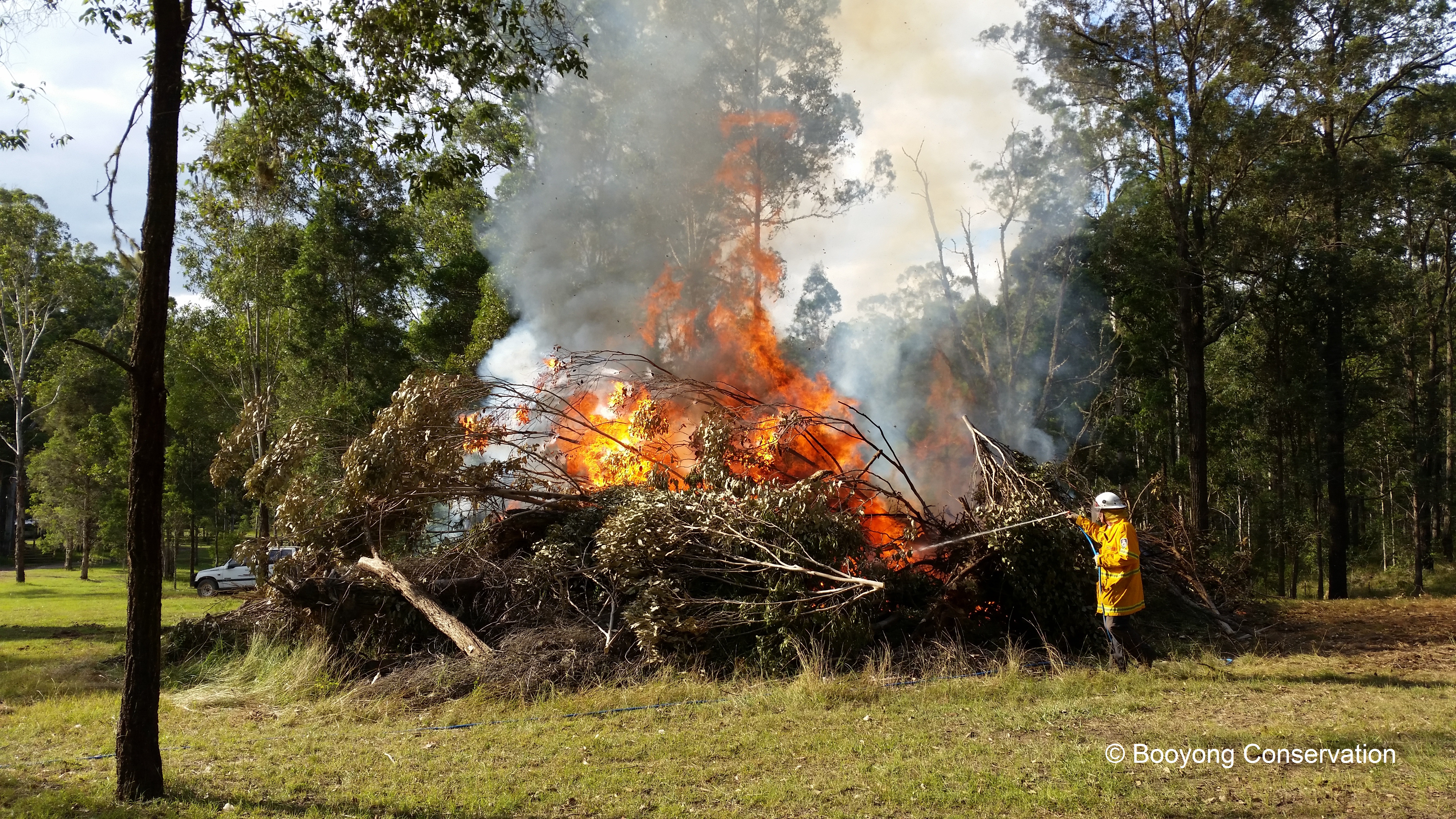You may have noticed over summer the piling of fallen down trees on rural properties. At Booyong as we’ve been tidying up we have accumulated a large pile of old trees that were not suitable for re-use. Ideally I would love to have had a chipper to make mulch for the garden, a dream for the future!
In the meantime we’ve had to do a burn to enable us to gain access to our proposed greenhouse sight. Brett thought this would be a good idea for a boy’s weekend and we were very fortunate that our lovely neighbor Brian is a member of the RFS and offered to come and lend a hand. Thanks too to Brad, Dean and Simon who came up and helped Brett out over the weekend!
 I have to admit I was concerned about burning this large pile without supervision – thanks Brian for putting my mind at ease!
I have to admit I was concerned about burning this large pile without supervision – thanks Brian for putting my mind at ease!
The RFS have some fantastic and easily accessible information on their website:
A Fire Permit is required for burning activities during the Bush Fire Danger Period which runs from 1 October to 31 March.
At least 24 hours before burning, you must notify your local NSW RFS Fire Control Centre or Fire & Rescue NSW Station of your intention to burn (unless specified otherwise in your permit). The fire authority will record the information and monitor weather conditions.
 You must also notify any adjoining neighbours . Your neighbours may be exposed to the smoke from your burn and may need to make preparations to avoid any negative impacts (medical conditions, impacts on sensitive crops, livestock and pets).
You must also notify any adjoining neighbours . Your neighbours may be exposed to the smoke from your burn and may need to make preparations to avoid any negative impacts (medical conditions, impacts on sensitive crops, livestock and pets).
It was a successful burn and I can’t wait to see the space, it will look great without that big pile of timber. Now we can start planning the greenhouse for Spring which is so very exciting!
BURNING OF PILES
The following safety measures will assist you in conducting a safe, effective pile burn.
- Before lighting the pile, ensure that you have suitable tools on hand (rakes and shovels) to
conduct the burn and control any possible spot fires.
- Accelerants (such as petrol) must never be used in the pile.
- Ensure that there is a sufficient water supply and that you have a hose with appropriate
water pressure that can reach around the pile to extinguish the fire (if required) and contain
any spot fires.
- Ensure that you wear protective clothing such as heavy cotton pants, a long-sleeved shirt,
leather work boots, work gloves and a wide-brimmed hat.
- Disturb piles immediately prior to lighting to scare away animals such as lizards and snakes
which may be taking refuge within the pile.
- Consider the weather. Only light the pile if the weather conditions are calm. High wind speed
may assist in smoke dispersal, but may also make the fire more difficult to contain. Contact
your local RFS Fire Control Centre or NSW Fire and Rescue station for advice.
- Light the fire at one point. A pile that is lit at multiple points may burn with more intensity and
may be difficult to contain.
- If the pile is on a slope, the ignition point should be upslope of the pile so that the pile ignites
slowly (burning in a downhill direction).
- Supervise the burn constantly after lighting to ensure there are no spot fires in surrounding
vegetation.
- Completely extinguish the pile immediately after the burn is finished. The spreading of burnt
material after the burn may assist in allowing for smouldering material to be extinguished
Burning of vegetation can potentially be hazardous. Ultimately you are responsible for any fire you
light and if it escapes you may be liable for the damage it causes. Before you start you should be
confident that you can carry out the burn.
